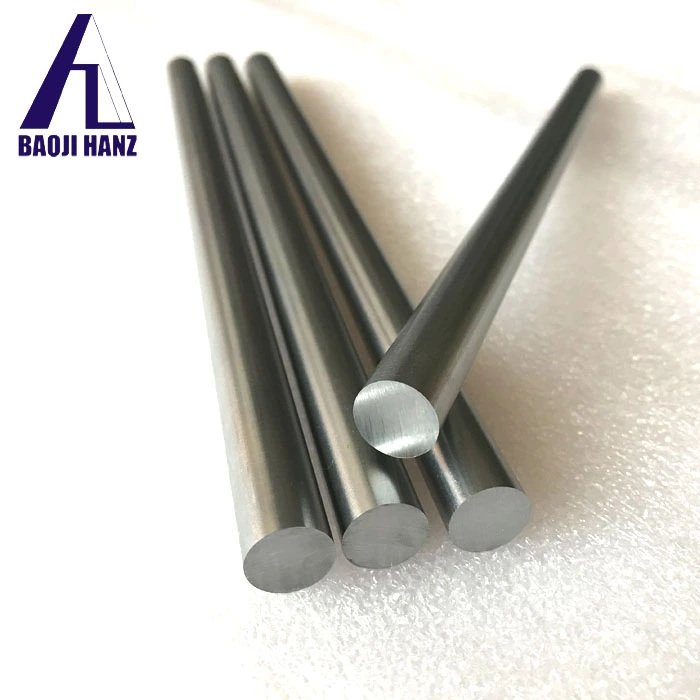Can nitinol rods bend?
2024-07-25 19:15:24
Yes, nitinol rods can bend due to their flexibility and shape memory properties. They can be deformed into various shapes while in their martensitic phase, which is stable at lower temperatures. Upon heating, typically above a specific transition temperature, they revert back to their original shape (austenitic phase). This ability to bend and recover their shape makes nitinol rods valuable in applications requiring controlled and repeatable movements, such as in medical devices, robotics, and aerospace components where precise actuation and flexibility are crucial.
What Makes Nitinol Rods Bendable?
The ability of nitinol rods to bend is primarily due to their superelastic and shape memory properties. Superelasticity refers to the ability of nitinol to undergo significant deformation and then recover its original shape upon unloading. This is possible because of a phase transformation between the austenitic and martensitic phases of the material. When a nitinol rod is bent, it undergoes a stress-induced phase transformation from austenite to martensite, allowing it to accommodate significant strain. Once the stress is removed, the material reverts to its austenitic phase, and the original shape is restored (SpringerLink) (Smart Wires).
Additionally, the shape memory effect allows nitinol to "remember" its original shape. When a nitinol rod is deformed at a lower temperature (martensitic phase) and then heated above its transformation temperature to the austenitic phase, it returns to its pre-deformed shape (Medical Device Network).
How Does Heat Treatment Affect Nitinol Rods?
Heat treatment plays a crucial role in the properties of nitinol rods. By subjecting nitinol to specific heat treatment profiles, its shape memory effect can be established. This process involves heating the nitinol to a temperature that alters its crystal structure, effectively "training" it to remember a particular shape. For instance, nitinol can be trained to remain straight or to take on a specific curvature. This treatment affects the mechanical properties, including the transition temperature and the rod's response to bending (Kellogg's Research Labs).
What Are the Practical Applications of Bendable Nitinol Rods?
Nitinol rods are utilized in numerous fields due to their flexibility and resilience. In the medical field, they are commonly used in stents, guidewires, and other surgical instruments that require precise and reliable performance. The superelasticity of nitinol ensures that these devices can navigate the complex pathways of the human body without permanent deformation (Medical Device Network).
In other industries, such as robotics and aerospace, nitinol rods are valued for their ability to undergo repeated deformation and recovery. This property is essential for components that must endure cyclical loading and unloading without compromising structural integrity (Smart Wires).
Can Nitinol Rods Be Used in High-Temperature Environments?
Nitinol rods can be engineered to function in various temperature ranges by adjusting their composition and heat treatment processes. The transition temperature of nitinol can be fine-tuned to suit specific applications, making it suitable for use in environments where temperature fluctuations are common. For example, certain nitinol alloys are designed to have an austenitic phase at high temperatures, ensuring they retain their superelastic properties under thermal stress (Smart Wires).
How Does the Composition of Nitinol Affect Its Properties?
The exact properties of nitinol rods can be influenced by their composition. Standard nitinol consists of nearly equal atomic percentages of nickel and titanium, but variations such as NiTiCu and NiTiFe introduce additional elements like copper and iron to modify characteristics like hysteresis and tensile strength. NiTiCu, for instance, offers lower hysteresis and higher efficiency, while NiTiFe provides greater ultimate tensile strength and durability, making it suitable for applications requiring enhanced performance (Kellogg's Research Labs) (Edgetech Industries LLC).
Conclusion
Nitinol rods are indeed bendable, thanks to their unique properties of superelasticity and shape memory. These characteristics allow them to undergo significant deformation and recover their original shape, making them invaluable in medical devices, robotics, and other high-performance applications. Heat treatment and composition adjustments further enhance their versatility, allowing nitinol rods to be tailored to specific needs and environments.
References
- Kellogg's Research Labs. "Nitinol Technical Basic FAQ." www.kelloggsresearchlabs.com.
- Shape Memory and Superelasticity. "Myths and Truths of Nitinol Mechanics: Elasticity and Tension–Compression Asymmetry." link.springer.com.
- Medical Device Network. "Metal With Memory: the Future of Nitinol." www.medicaldevice-network.com.
- Smart Wires. "Nitinol - FAQ." www.smartwires.eu.
- Edgetech Industries. "Nitinol Rod (Shape Memory, Superelastic alloy)." www.edgetechmat.com.
